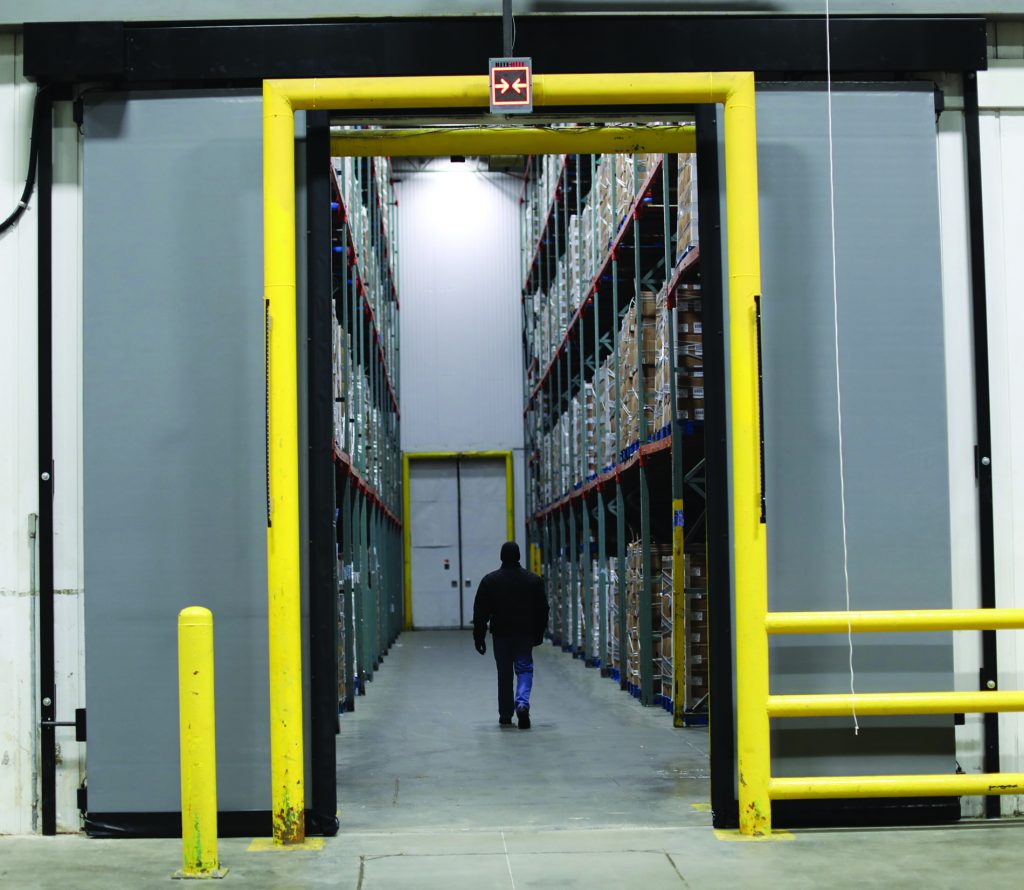
What’s up dock? Diagnosing industrial door problems
By Jon Schumacher
Facilities Maintenance Operations Automotive Forestry Manufacturing facilities industrial door manufacturing Operations production SafetyAddress them promptly to protect against environmental and security issues.

A door off its track is easy to spot.
PHOTO: RITE-HITE
Doors are critical gateways, whether they’re positioned at the exterior or interior. They span a wide variety of uses. Doors might separate inside from outside, help protect workers from dangerous processes or isolate micro-climates for optimal production efficiency. When they aren’t working properly, facilities could face unscheduled downtime and costly shipping or production delays.
It’s important to ensure that doors work properly. When they aren’t, the simplest response is to repair the door. This means regular audits and maintenance should be performed to ensure it’s operating properly and sealing effectively, especially in temperature-controlled areas. After all, facility managers don’t want to play a guessing game that involves asking, “What’s behind door number one?”
There are many reasons that doors can break down and many problems that should trigger investigation into problematic doors. These typically include:
-Won’t open or frequently get stuck;
-Leaking or the seal is damaged;
-Dents, damaged or hit by forklifts;
-Off their track;
-Impacted by grime build-up, oxidation/rust or other signs of deterioration; and
-Frost accumulation along the edges and/or are in areas where maintaining proper temperatures is an issue.
Many of these problems are obvious. A door that’s difficult to open or is off its track is easily noticed. However, some problems are much less obvious such as a leak or poor sealing properties. Lackluster seals lead to wasted energy, damaged product, and safety issues.
Frost management
Take frost accumulation. This problem is often the result of wide temperature differences and a bad seal. As moisture from a warmer, higher humidity area draws nearer to a damaged door opening near a cooler or freezer, it condenses in the form of frost. The ice buildups lead to slips, as well as difficult “speed bumps” to cross safely. And these coolers must work harder to maintain the required temperature for the products inside. Many facilities will invest in defrost systems to prevent this from occurring, which increases energy use.
Since an ineffective door creates a cascade of problems, it’s important to evaluate them immediately to determine if they are reparable.
Caught early, some of the more minor problems can be repaired by facility staff, but some will not be easily fixed and others will require external expertise.
When repairing doors in-house, always keep safety in mind. Ensure the door is locked out/tagged out, cannot fall on someone and that the repairers are wearing personal protective gear – even if they are just investigating.
Remove the obvious
Rule out the most obvious problems first, such as empty or malfunctioning power sources for automatic doors or grime that needs to be cleared from the tracks. Power doors that are off their tracks should not be forced back on. The repair team should only attempt to put the door back onto its track if the door and track aren’t physically damaged, and the spring or chain is still intact.
When diagnosing a problem with a cold storage or freezer door, keep in mind the cause will determine the scope of repair needed – and it may go beyond just the door. While it’s easier to replace components, such as hinges or panels, it will likely be more difficult to replace or repair walls, floors and entire refrigeration systems.
Address problems as quickly as possible to avoid further disruption to the business and to avoid security or environmental risks. Facility and operation managers should be diligent checking on door conditions. The best practice is to keep to a comprehensive maintenance schedule that will prevent big issues down the road.
____________
Jon Schumacher is the a director at Rite-Hite Doors, based in Brown Deer, Wis. E-mail jschumacher@ritehite.com. Visit www.ritehite.com.
